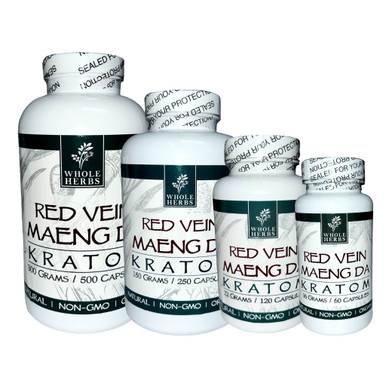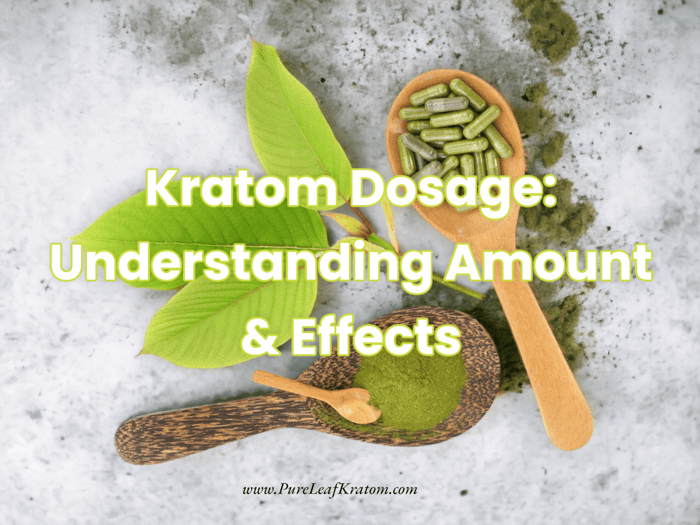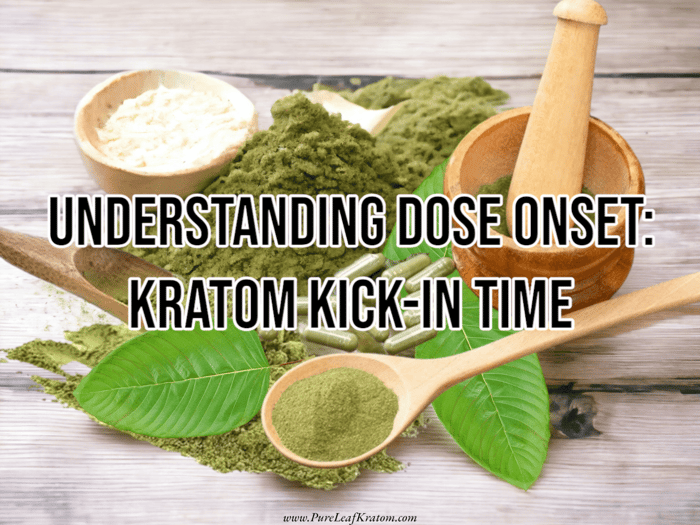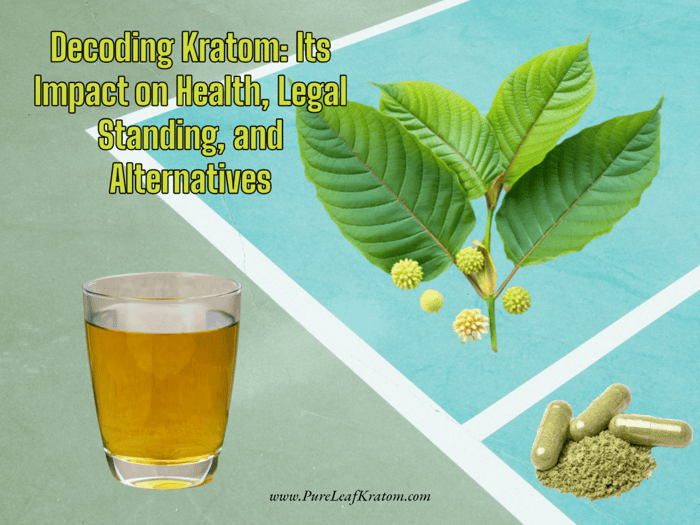
Decoding Kratom Metabolism: Its Lifespan in Your Body and Impacts on Health
Exploring Kratom: From its Benefits to its Uses
Kratom, scientifically known as Mitragyna speciosa, is a tropical evergreen tree native to Southeast Asia. Its leaves, known for centuries in traditional medicine, are influenced by Metabolism.
The Historical Journey of Kratom
The local farmers and laborers in areas like Malaysia, Thailand, and Indonesia originally discovered and utilized Kratom. They chewed the leaves for its stimulating effect that helped them endure long, grueling hours of manual labor. The analgesic properties also offered them relief from the physical pain that often comes with such arduous work. Over the years, Kratom transitioned from a local, traditional remedy to a globally consumed substance.
Modern-day Uses of Kratom
Presently, the use of Kratom is not limited to Southeast Asia. It has amassed global popularity for both its therapeutic and recreational benefits. Users often consume it in the form of capsules, teas, or powders, amongst other ways. Many people cite it as a natural remedy for ailments like chronic pain, opioid withdrawal symptoms, and even anxiety. However, it's also adopted by some for recreational purposes due to its potential to provide euphoric effects at higher doses.
The Story Behind this Article
Understanding Kratom and its metabolism in the body is critical for those considering using it or seeking information about this plant. The roles of Kratom are not limited to the immediate impacts it produces. As you'll see in this article, the lifespan of Kratom in a user's system and how it affects their physical health is also a crucial aspect that warrants recognition.
Let's explore and decode the way Kratom is metabolized in the body. We will delve into a variety of influential factors, such as age, usage patterns, and overall health status while illustrating the possible durations that Kratom stays in different systems. By the end of this read, you'll also have insights into its long-term effects on physical health.
Whole Herbs Kratom Capsules Red Maeng Da

$9.69
Whole Herbs Red Vein Maeng Da Kratom Capsules Indulge in a realm of kratom excellence with the captivating premium Whole Herbs Red Vein Maeng Da...… read more
Understanding Metabolism
All living organisms process and manage energy through a process known as metabolism. This complex system of chemical reactions propels life by converting food into energy, fueling each cellular cycle, and facilitating the elimination of waste products. Significant inter-individual differences in metabolism rates can be attributed to a variety of factors such as genetics, diet, and physical condition.[1]
Kratom Metabolism
Kratom is primarily metabolized in the liver, where biologically active compounds, called alkaloids, are transformed by enzymes into metabolites. This process helps the body to utilize, distribute, and eventually eliminate Kratom.
How Kratom is Metabolized in the Body
Among Kratom's nearly thirty identified alkaloids, mitragynine and 7-hydroxymitragynine are the most prominent. In the metabolization process, the liver's enzymatic machinery works to transform these substantial alkaloids into several identifiable metabolites.[2] Their abilities to readily cross cellular barriers allow these metabolites to exert their effects.
The Primary Metabolites Formed
In the case of the mitragynine molecule, three primary metabolites are formed: mitragynine pseudoindoxyl, 7-hydroxymitragynine, and mitraphylline. These metabolites are predominantly excreted in the urine and may be detectable for several days after consumption.[3]
The Role of Liver Enzymes in Kratom Metabolism
The liver enzymes mainly responsible for this transformation are the cytochrome P450 family, particularly CYP3A4 and CYP2D6. These enzymes undergo the process of oxidation to create new molecular structures, which play a crucial role in determining how long Kratom components stay in your body and how they affect you.[4]
Hush Kratom Ultra Shot Extract 10mL

$11.69
Hush Kratom Ultra Shot Extract Are you ready to take your Kratom experience to an entirely new level? Look no further than the Hush Ultra...… read more
Factors influencing how long Kratom stays in the system
Different elements play a pivotal role in determining how long Kratom remains in the system. Notably, factors such as age, pattern of use, and an individual's health conditions significantly influence Kratom's metabolic process and thus, its lifespan in the body.
Age
Similar to many substances, age can drastically impact the metabolism and elimination of Kratom from the body. Our body's metabolic rate steadily decreases as we age, a natural process that might extend the duration for which Kratom stays in our system.
On the one hand, a younger, healthier body might metabolize Kratom relatively quickly. The liver and kidney functions are typically at their peak, promoting efficient detoxification. On the other hand, as we age, our bodies might struggle with efficiently processing substances, including Kratom, potentially leading to an extended presence in the system.
Usage Patterns
The frequency and quantity of Kratom use have a sizeable impact on how long it remains in the system. Single doses of Kratom are generally processed more quickly as the body does not need to metabolize accumulated compounds.
In contrast, regular or frequent doses of Kratom lead to a build-up of its metabolites in the body. This situation, combined with the fact that Kratom has a half-life of approximately 24 hours, means that the substance may linger for an extended period. Further, larger dosages will naturally take a longer time to eliminate from the body due to the sheer volume of the substance that needs processing.
Health Status
As has been mentioned earlier, Kratom primarily metabolizes in the liver. Therefore, any health conditions related to the liver, such as liver disease or reduced liver function, can influence the metabolism of Kratom. Specifically, if liver function is compromised, the body may struggle to efficiently metabolize Kratom, prolonging its stay in the system.
Moreover, other health conditions might influence the metabolic rate and Kratom's total lifespan in the body. For instance, people with slower metabolic rates, potentially due to conditions like hypothyroidism, might process Kratom slower than those with no such conditions. Hence, understanding individual health status is crucial when considering Kratom use.
[CONTENT]
Illustrations of varying durations Kratom stays in different systems
Understanding the lifespan of Kratom within various systems largely depends on the frequency of use. From infrequent users to chronic consumers, each individual's experience with Kratom's presence in their body will differ significantly. Let's delve into the diverse timelines, contributing factors, and implications associated with these usage patterns.
Infrequent Users
Infrequent Kratom usage is characterized by sporadic or occasional intake of the substance. For these individuals, the presence of Kratom alkaloids in the system is typically short-lived.
Research indicates that in cases of singular or infrequent use, the half-life of the primary alkaloid, mitragynine, ranges between 3.85 to 9.43 hours. Therefore, it can effectively be eliminated from the body within approximately 24 to 44 hours following consumption.
However, there is considerable variation among infrequent users. Differences in metabolism rate, the dose taken, and individual genetic factors contributing to the speed of the liver's P450 enzymes can result in different durations for Kratom to entirely exit the system.
Regular Users
As for regular users, those who consume Kratom more frequently, the timeline shifts considerably. Regular usage can lead to a build-up of Kratom metabolites in the system, resulting in a prolonged duration of the substance's presence in the body beyond the primary alkaloid's half-life.
Scientific literature suggests that with daily use, the half-life of Kratom could extend up to roughly 23 hours. This increased timeline underscores the necessity for habitual users to be mindful of their consumption patterns and Kratom's lifespan within their system.
Chronic Users
Finally, chronic users - those who consume Kratom excessively or over a long duration - it's noted to have the longest Kratom lifespan in their body systems. For these individuals, consistent heavy usage leads to a significant accumulation of metabolites, which can dramatically prolong Kratom's presence within the system.
Research has yet to establish a precise timeline in such cases due to the multitude of contributing factors. However, Kratom may be detectable in chronic users for up to a week or potentially longer following the last consumption.
Chronic users should also be aware of the additional health effects associated with long-term, heavy Kratom usage. These may include dependence or withdrawal symptoms following discontinuation, which can further complicate the timeline of Kratom's presence within their system.
Kr8om Kratom Maeng Da Bundle

$39.95
Kr8om Kratom Maeng Da Bundle Welcome to a realm of elevated well-being with the Kr8om Kratom Maeng Da Bundle. A showcase of meticulously selected Maeng...… read more
How Kratom affects physical health over time
Research into the effects of Kratom on physical health has revealed both positive and negative effects that substantiate its reputation as a complex and powerful plant. These varied effects underscore the importance of knowing your body well and adopting mindful usage patterns.
Positive Effects
Utility and benefits derived from Kratom vary from person to person. Several people, however, report a beneficial impact ranging from management of pain to emotional wellness.
Short-term benefits of Kratom use
Kratom has gained popularity, especially among individuals with chronic pain conditions. The presence of alkaloids in Kratom works on the body's opioid receptors, creating short-term effects similar to painkillers. Sufferers of chronic conditions like fibromyalgia and arthritis often report relief through Kratom consumption. Additionally, it's not uncommon for Kratom to be used as a self-treatment for opiate withdrawal symptoms.
Long-term benefits
The long-term benefits of Kratom are less clear, but some users who manage their intake mindfully claim a sustained improvement in their quality of life.
The role of moderation and dosage in achieving beneficial effects
Like with most substances, moderation is key when it comes to Kratom. Regular monitoring and control of intake help ensure it provides the desired effect without succumbing to excessive use.
Negative Effects
Despite its potential advantages, Kratom is not without risk. Potentially harmful impacts must be closely monitored to ensure safe use.
Immediate potential side-effects
Short-term negative effects, while varying across individuals, can include nausea, dry mouth, constipation, or trouble sleeping. Kratom consumption may also lead to cognitive and motor impairment, impacting daily living activities and posing potential risks particularly when engaging in tasks such as driving.
Long-term risks
Regular Kratom use can lead to dependence or addiction. Tolerance to the drug can increase with frequent use, thereby necessitating larger doses to achieve the same effect, potentially creating a cycle of dependence over the long term. Those trying to cut back on their Kratom intake after heavy usage may experience withdrawal symptoms, a clear indicator of dependence.
Diseases and health conditions linked to frequent or prolonged use of Kratom
Chronic use of Kratom can result in damage to the liver, as suggested by several case reports. Liver damage can result in symptoms like jaundice or dark urine. Severe cases could potentially result in liver failure. In addition, reports suggest that chronic consumption of Kratom might be linked with a rare but serious condition called cholestatic hepatitis.
While a considerable portion of Kratom users report beneficial effects, misuse or excessive usage can have serious consequences, emphasizing the importance of moderation and close monitoring of consumption.




